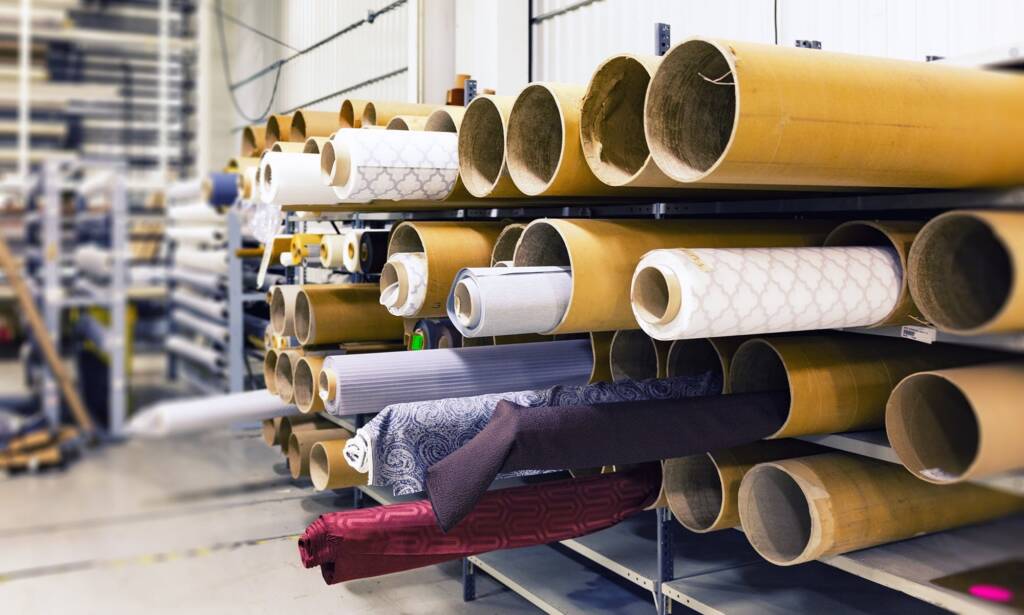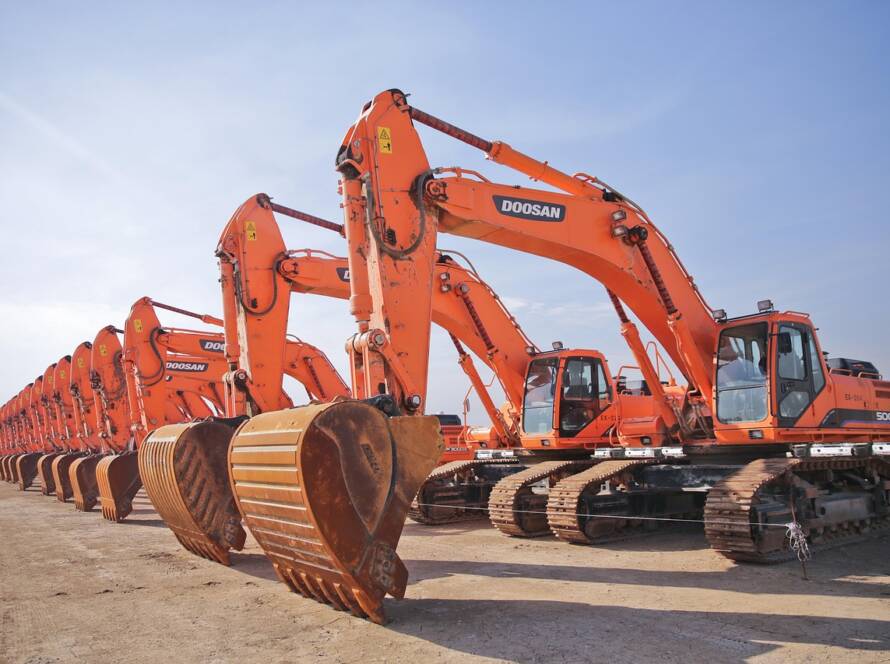Welcome to our latest blog post, where we delve into the exciting world of energy-efficient machinery and equipment for manufacturing! In today’s rapidly evolving industry landscape, businesses have become more critical than ever to adopt sustainable practices that benefit the environment and improve their bottom line.
Join us as we explore how innovative technologies revolutionize manufacturing processes, reduce energy consumption, and pave the way for a greener future. Get ready to be inspired by cutting-edge solutions and discover how your company can contribute to a more sustainable tomorrow while boosting productivity and profitability. Let’s dive in!
The importance of energy-efficient machinery and equipment
The manufacturing industry is responsible for a significant portion of energy consumption worldwide. According to the International Energy Agency, this sector accounts for around 37% of global final energy demand.
With increasing concerns about climate change and the depletion of natural resources, it has become crucial for manufacturers to adopt more sustainable practices. One way to achieve this is by using energy-efficient machinery and equipment.
Energy-efficient machinery and equipment refers to technologies requiring less power to perform their intended functions without compromising productivity or quality. These systems are designed to minimize wastage and maximize efficiency, thereby reducing the overall energy consumption in manufacturing processes.
Benefits of using energy-efficient machinery and equipment in manufacturing
Energy efficiency has become a top priority for many industries, especially manufacturing. Using energy-efficient machinery and equipment helps reduce operational costs and has several other benefits. In this section, we will discuss the various advantages of using energy-efficient machinery and equipment in manufacturing.

- Cost Savings: One of the most significant benefits of using energy-efficient machinery and equipment is cost savings. Businesses can significantly lower their utility bills by reducing the amount of energy consumed. This is particularly beneficial for small and medium-sized enterprises that have limited budgets.
- Increased Productivity: Energy-efficient machines are designed to operate at a higher level of productivity while consuming less energy. This means businesses can produce more goods without increasing their energy consumption, resulting in increased profits.
- Reduced Maintenance Costs: Energy-efficient machinery and equipment are designed with advanced technology, reducing wear and tear on parts and components. As a result, businesses can save on maintenance costs as these machines require less frequent repairs or replacements.
Types of energy-efficient machinery and equipment available
Various energy-efficient machinery and equipment are available for manufacturing industries, all designed to reduce energy consumption and improve overall efficiency. This section will discuss some of the most common energy-efficient machinery and equipment used in manufacturing processes.
- Energy Efficient Motors:
Motors Equipment are responsible for driving various machines and equipment in a manufacturing facility, making them one of the significant sources of energy consumption. However, with technological advancements, energy-efficient motors have been developed to reduce electricity usage while maintaining high-performance levels significantly. These motors often use variable speed drives to adjust their speed according to the required load, resulting in reduced energy waste. - LED Lighting:
Lighting is another significant source of energy consumption in manufacturing facilities. Traditional lighting, such as fluorescent or incandescent lights, can be replaced with more efficient options like Light Emitting Diode (LED) lights. LED lamps have a longer lifespan and consume less power than traditional lighting systems, thus reducing electricity costs.
Energy-efficient motors and drives
Energy-efficient motors and drives are crucial components of the machinery and equipment used in manufacturing. These devices significantly optimize energy consumption, reduce costs, and improve overall efficiency in the industrial sector.
In simple terms, energy-efficient motors and drives are designed to use less energy while still providing the same level of performance as conventional motors. Technological advancements, such as improved motor design, better materials, and advanced control systems, achieve this.
One of the main benefits of using energy-efficient motors is their reduced electricity consumption. Traditional electric motors waste considerable energy through heat dissipation and friction. In contrast, energy-efficient motors are built with precision engineering and incorporate advanced technologies that minimize these losses. As a result, they can operate at a much higher efficiency level, translating into significant cost savings for manufacturers.
Additionally, many countries have strict regulations regarding energy efficiency standards for industrial equipment. By using energy-efficient motors and drives, manufacturers can ensure compliance with these regulations while reducing their carbon footprint.
High-efficiency lighting systems
High-efficiency lighting systems are an essential aspect of energy-efficient machinery and equipment for manufacturing. Lighting accounts for a significant portion of energy usage in industrial settings, making it a crucial area to focus on for reducing energy consumption and costs.
Several high-efficiency lighting systems are available that can significantly improve the energy efficiency of manufacturing facilities. These systems consume less energy and have longer lifespans, saving costs over time. Let’s look at some of the manufacturing industry’s most commonly used high-efficiency lighting systems.
- LED Lighting: Light-emitting diode (LED) technology has revolutionized the lighting industry with its exceptional energy efficiency and long-lasting performance. LEDs use up to 80% less electricity than traditional incandescent bulbs and have a lifespan of up to 50,000 hours, compared to just 1,200 hours for incandescent bulbs. This makes them ideal for industrial settings where lights must be on for extended periods.
Moreover, LED lighting provides better quality light with a higher color rendering index (CRI), making spotting defects or errors in production processes easier. They also contain no harmful chemicals such as mercury, making them environmentally friendly.
- T5/T8 Fluorescent Lighting: T5/T8 fluorescent lighting is another popular choice among manufacturers. These systems use fluorescent tubes that are more efficient than traditional incandescent bulbs but not as much as LEDs.
Automated controls and sensors
Automated controls and sensors play a crucial role in the manufacturing industry’s machinery and equipment energy efficiency. These technologies use advanced algorithms and data collection to optimize operations, reduce energy consumption, and minimize waste.
One of the main benefits of automated controls is their ability to monitor and adjust settings in real-time.
This means that machines can react quickly to changes in production demands or environmental conditions, such as temperature or humidity. By constantly monitoring and adjusting operations, these systems ensure that machines are running at peak efficiency at all times.
Renewable energy sources
Renewable energy sources are becoming increasingly important in the manufacturing industry as companies strive to reduce their carbon footprint and become more environmentally sustainable.
These energy sources are derived from natural resources that are constantly replenished, such as sunlight, wind, water, and geothermal heat. By utilizing renewable energy sources, manufacturers can reduce their environmental impact and save money on energy costs in the long run.
Solar power is one of the most widely used forms of renewable energy in manufacturing. Photovoltaic (PV) panels are installed on rooftops or open spaces to capture sunlight and convert it into electricity.
This electricity can then power machinery and equipment within a manufacturing facility. The initial cost of installing solar panels may be high, but manufacturers can see significant savings on their energy bills over time.

